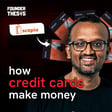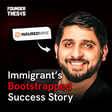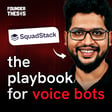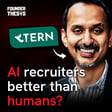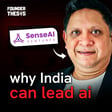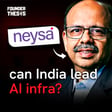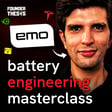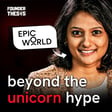
A Founder's Journey from Transport to Personal Care | Gaurav Agarwal @ Nat Habit
Every few years, a new trend in the startup world catches the attention of VCs and this episode features a founder who has successfully navigated multiple such trends in the Indian startup scene. Gaurav Agarwal began his entrepreneurial journey with ZipGo, a ride-hailing startup that competed with industry giants like Ola and Uber. After an exciting journey with ZipGo, which eventually led to its acquisition, Gaurav hopped on his next big adventure in the D2C space. With Nat Habit, he and Swagatika are building a brand dedicated to providing fresh and natural skincare products to Indians.
Get notified about the latest releases and bonus content by subscribing to our newsletter at www.founderthesis.com
Read more about Nat Habit:-
1.Nat Habit’s Personal Care Range Is Made From Fresh Ingredients To Nurture Natural Wellness
2.Nat Habit’s Swagatika Das on being an online brand and the road ahead….








